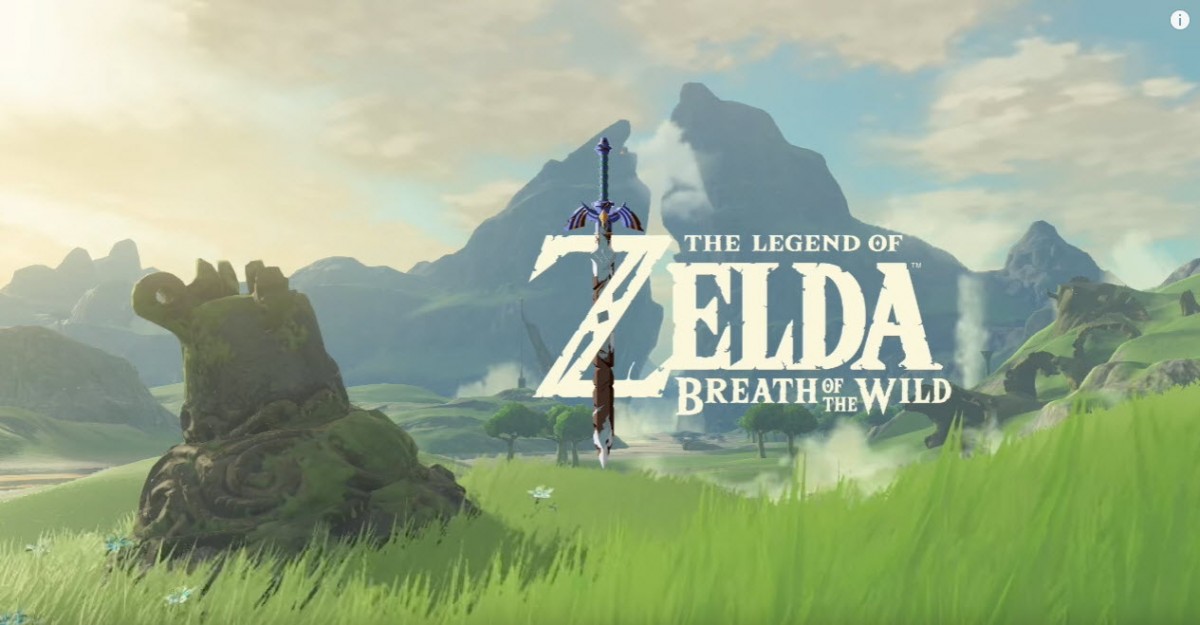Review: ‘The Legend of Zelda: Breath of the Wild’

Neal Sweeney ’19 / Emertainment Monthly Staff Writer
It’s been years since the last 3D open world Zelda game came out (which was Skyward Sword for the Wii back in 2011) and in that time a lot has happened for open world games. Worlds have gotten larger and more complex, and players have become accustomed to long lists of side activities to complete as well as towers to climb. Breath of the Wild aims to modernize the Zelda franchise while also retaining what has made it so iconic for the past three decades, and it succeeds in just about every single way.
Breath of the Wild starts out fairly simply; the player, as Link, awakes in a mysterious chamber within Hyrule and ventures out to meet an old man who teaches you some of the basics of the game, and gives you a device called a Sheikah Slate from a precursor race. The player finds weapons out in the open world and can carry a limited number of them as they make their way through the world, with each one having a number to designate its power. The weapons have limited durability and will break, requiring players to use their weapons smartly and constantly be on the lookout for new ones. This same durability also exists for shields and bows, but those objects seemed to break less often.

One of the other things the player will quickly notice is the stamina meter. Stamina is required for sprinting as well as climbing and swimming, and is awfully limited at the beginning, only letting the player sprint for seven or so seconds before they need to stop and allow it to recharge. The recharge doesn’t take awfully long, but can result in inconvenient falling or drowning. But stamina isn’t required for swinging weapons or guarding, and can be upgraded to heavily increase the capacity.
One of the main activities in this starting area are shrines and towers. Yes, you read that correctly, Breath of the Wild has towers in it. Shrines are short, dungeon-esque puzzles that are scattered all throughout the world, utilizing the games mechanics and abilities that are given early on. While most of these retain the same formula, there are some in the later game that will change things up and offer significantly more challenge as a nice, refreshing change of pace. The player is given a few key powers early on which are administered as runes on the Sheikah Slate, such as the power to create climbable towers of ice on watery surfaces, to move metallic objects, to create bombs, and so on. These abilities need a short period of time to recharge after being used but are very readily available, meaning that the days of running out of bombs are over. These shrine puzzles make surprising use of the games somewhat limited ability set, finding new and interesting ways to implement the same concepts repeatedly, instead of traditional Zelda games where one would need to find a large array of items to actually complete all of the challenges. It creates more of a sandbox than games in the past have, allowing players to experiment with different abilities and weapons to create some fun and unique situations.

One of the other important things that players will notice is that the wildlife and enemies will drop items, all of which can be used in the game’s cooking system to create lots of potions that grant various effects, such as buffs to movement speed and damage or resistance to environmental effects, as well as food items to restore your health. While enemies traditionally dropped hearts and rupees, they now don’t, and players will actually have to hunt and cook if they want to regain their health. It creates an atmosphere in which the player has to prepare for fights instead of charging in head first. This preparation makes some of the games tougher fights actually feel like bigger events, and gives them a bit of preamble that allows them to have their own narrative. The combat system is fun and engaging, keeping players on their toes at all times, and not allowing them to always run in and wreck shop like they might have been able to in the past.
Now, the more apparent downsides, which are largely technical. The game looks quite pretty and has the style of a more sophisticated The Wind Waker, but the performance leaves a lot to be desired. Across both versions, frame rate drops are apparent, and consistently happen when entering busy areas like towns or when it’s raining. Additionally, the draw distance is very apparent; details can’t be seen too far in the distance, which doesn’t present an issue for gameplay, but can impact immersion. On the Wii U version, the gamepad does literally nothing. Players can choose to display the game on either the TV or the gamepad, but not both, and there are no touch controls for inventory.

However, both versions are totally playable and aren’t going to ruin your experience. Breath of the Wild is an incredibly complicated and fascinating take on open world games. What makes this game such a special achievement is that it feels new and fresh again, and is a very multifaceted sandbox that has a wide array of factors that allow players to experiment and discover, but also to fail and learn from mistakes. It can seem harsh at times, allowing players to get lost or frustrated as they repeatedly attempt the same puzzles to no avail, but it’s fair. It somehow manages to take the same familiar tropes and put a new spin on them, making them feel almost like new again. If Breath of the Wild can be compared to Ocarina of Time, then hopefully a Majora’s Mask will be coming soon.